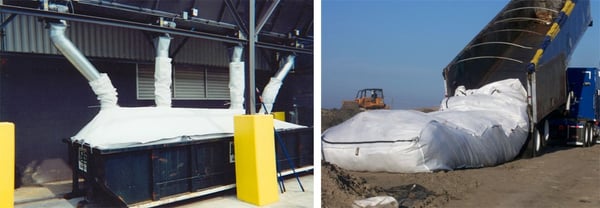Waste haulers often cause headaches for their disposal facilities by generating large dust clouds when dumping fine, powdery wastes that are easily carried by the winds. This can cause a number of environmental compliance problems for the facility and have an impact on the health and safety of staff, customers and neighboring communities. These dust clouds can also lead to an increased risk of incurring regulatory infractions and fines.
Industrial settings like plants are typically the generators of dusty wastes from their sanding, cutting, burning or milling processes. The dusty waste is often collected by dust extraction systems installed to protect workers from potential hazards associated with exposure to the dust or to minimize the release of dust to the environment.
Waste generators, waste haulers and landfill sites alleviate this problem by utilizing one of the following procedures for disposal.
- Containing the waste at the generation point is the optimal solution. Utilizing affordable, custom manufactured container-sized waste bags to contain and haul the waste helps to reduce cleanout costs, limit worker exposure and fully contain the dusty waste. PacTec offers several styles made from a variety of materials to meet your jobsite and/or waste specifications.

- Wetting the waste is another way of minimizing the likelihood of dust cloud formation at disposal. This is commonplace in many areas, but also drives disposal costs up as the load becomes heavier and increases box cleanout expenses. Special care must also be taken to prevent any run off created and to ensure solid waste criteria are still met per EPA guidelines.
- Mixing the dusty waste into the general waste stream is another option for minimizing dust. This results in a change in waste classification to mixed solid waste loads, and depending on the disposal facility, this method may or may not be acceptable. Some landfills are regulated to handle this mixture differently and may charge more or have different disposal protocols in place for handling this mixed waste stream.




